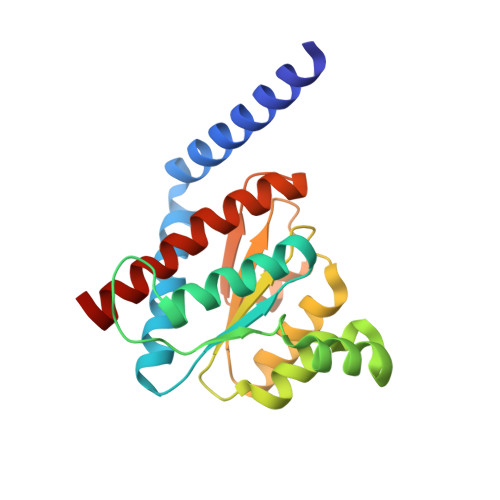A half-site multimeric enzyme achieves its cooperativity without conformational changes.
Vivoli, M., Pang, J., Harmer, N.J.(2017) Sci Rep 7: 16529-16529
- PubMed: 29184087
- DOI: https://doi.org/10.1038/s41598-017-16421-2
- Primary Citation of Related Structures:
5LTZ, 5LU5, 5LU6, 5LU7 - PubMed Abstract:
Cooperativity is a feature many multimeric proteins use to control activity. Here we show that the bacterial heptose isomerase GmhA displays homotropic positive and negative cooperativity among its four protomers. Most similar proteins achieve this through conformational changes: GmhA instead employs a delicate network of hydrogen bonds, and couples pairs of active sites controlled by a unique water channel. This network apparently raises the Lewis acidity of the catalytic zinc, thus increasing the activity at one active site at the cost of preventing substrate from adopting a reactive conformation at the paired negatively cooperative site - a "half-site" behavior. Our study establishes the principle that multimeric enzymes can exploit this cooperativity without conformational changes to maximize their catalytic power and control. More broadly, this subtlety by which enzymes regulate functions could be used to explore new inhibitor design strategies.
Organizational Affiliation:
Department of Biosciences, University of Exeter, Stocker Road, Exeter, EX4 4QD, UK.






















